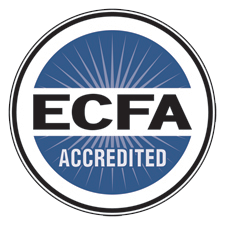Bululu CarePoint


Bululu Sub-County is a rural town located in Kalaki County, Kalaki District and is approximately 35 kilometers from Soroti City. Bululu Sub-County covers a total land area of 235 square kilometers with an estimated population of 27,000 people living in about 4,665 households. More men are educated than women due to early pregnancies, too many household chores for young girls, and poor sanitary facilities in schools. These factors contribute to high dropout rates for girls, whereas boys may miss school because they are expected to look after the cattle and fish along the lake shores.
The vision of Bululu Sub-County is to have a healthy, educated, and prosperous community by 2040. Leaders of Bululu are ensuring that awareness is created among the population about life-threatening diseases like HIV/AIDS, and that mitigation measures are promoted. They are also lobbying with the development partners to provide both economic and social support like education and health care services to the population. A partnership with the Bululu CarePoint will allow the children to continue to grow physically, spiritually, and emotionally.
About the Community
Assets
- Religion: Bululu is predominantly Catholic, followed by Anglican, and lastly Evangelical. Islam and paganism are the minority. The religious institutions have helped in maintaining law and order and spiritual support.
- Leadership: The Bululu CarePoint already has a local team in place, lead by Edwoku Charles.
Challenges
- Nutrition: The nutritional status of Bululu community is unpredictable given the dilapidated environment. The recent health survey by the ministry of health indicate that only 32.4% have good nutrition. The community faces the problem of food insecurity. The little food harvested is sold to earn a daily income for survival.
- Children and Youth: The children are affected due to divorce, polygamy, alcoholism, and poor feeding. The majority have neglected school and have taken route to the lake for a small catch to earn a living while missing school.
- Economic: The livelihood of the area is reliant on subsistence farming and fishing as a main source of food and income. Food security is a major concern. Many families do not have enough food to last through the year, and more than one in four children under the age of five is stunted. This is a result of limited access to current modern technology to till the land. Other people live by casual work/selling labor, keep domestic animals, burn charcoal and fish where they can earn income for basic needs. The typical daily income one earns is two thousand Uganda shillings, or 50 cents in USD.
- Domestic Violence: High rates of domestic violence among the community which affects their ability to conduct any economic activities. Because of this, there are high rates of separation—a condition that has left children in the area in desperate conditions and force them to live with their grandparents.
- Environment: Natural calamities such as floods, frequently damage the plants/crops, housing/shelter, and transport networks in the area.
- Education: The education situation completely collapsed in Bululu following the invasion of Lord’s Resistance Army (LRA) rebels in Kaberamaido district, and Bululu was highly affected making it lag behind compared to other communities. The rate at which children drop out of school is high because of persistent poverty. This has caused children to resort to fishing, charcoal burning as a source of income, and early marriages. The area still faces challenges in providing education to the children. Most children fail to go to these schools because of lack of school fees and the long distances in which the schools are situated. When children drop out of school they resort to casual work in the village and involve themselves in bad peer influences that lead them into criminal activities. Bululu has no skills development center, nor do they have a vocational institution.
- Health: In the community area of water, sanitation, and hygiene, although progress has been made, a lot must still happen to address issues of coverage of water, and the maintenance of existing water sources. Sanitation is still poor due to reluctance of the population to sink pit-latrines and maintain the existing water sources. The population has problems in accessing health facilities, sometimes situated between 5-10 kilometers away. There is also high HIV prevalence because many families are polygamous.
How many Friendships are available?
150-300
How many other partnerships are there at this CarePoint?
None
What is HopeChest's model?



We believe the most transformational, holistic, sustainable, and long-term change occurs when one community partners with another. Learn more about our approach.
What does a partnership consist of?
Monthly Support
Programs
Projects
Fundraising
Partner Visits


Monthly Support
Unlike traditional child sponsorship models, the Friendship Model reframes our perspective on child sponsorship by reducing the perpetuation of paternalism. It also helps frame the perspective that financial support has a broader impact on the community and is not focused on only the individual child. Learn more about the Friendship Model.
out of 300
$113,400 per year
If 70% of the children are supported, there would be minimal to average ongoing programming.
We would establish an annual plan; with people and resources needed; a community leadership team; Friendship Model relationships; discipleship; educational, nutritional, and medical support (varied, basic); monthly reporting; and some training for youth, parents, guardians.
out of 300
$162,000 per year
If 100% of the children are supported, there would be full programming with regular discipleship, nutrition, education and enhanced medical support
There would also be ongoing social/emotional support; available funds for “Succeed Initiatives” such as income-generating activities, and revenue-generating activities training; seed money; cultural celebrations; additional training; and ongoing impact reporting.
Nutrition: Ensure that children receive a nutritious meal – initially, two times per week – to fortify the diet of students and, thereby, improve their learning and school performance. In three years, we plan to increase this up to five times per week.
Health: Improve the quality of the health and nutrition of the children attending to the CarePoint. This will help them increase their attention span in class and improve their school learning.
Discipleship: Teach practical areas of life such as identity, health, community and economics, all of which are based on Biblical principles so that each child recognizes their own responsibility in seeking a life of dignity and purpose.
Education: Help the educational process with a tutoring program during after-school hours. At the same time, we want to involve the parents in the educational process. To accomplish this, we want to conduct three training sessions during the year where qualified people will be invited to share with parents about the value of education. We will integrate technology in the learning process and new school regulations are issued, giving the children access to internet, printing and photocopying materials and access to a tablet to download their homework.

programs
Monthly gifts from your community members through the Friendship Model will support the regular activities of the CarePoint; however, these gifts do not cover all programming needs. We often request funds to support medical, education, and nutrition needs to supplement things like medical emergencies, higher education costs for some students, and even special nutritional support.
![]() Education: $129,875
Education: $129,875
![]() Nutrition: $87,500
Nutrition: $87,500
![]() Medical: $75,000
Medical: $75,000
*estimated costs over 10 years

Projects & Fundraising
For each CarePoint and community, a formal Community Profile and Risk Assessment will have been completed by our staff before we begin programming. Those factors, with the vision and dreams of the community, are combined to form a comprehensive plan for this community over time. Every project cost that has been listed will be evaluated with a formal proposal and evaluation when it comes time to fundraise and implement the project.

Land and Fencing: $22,858



CarePoint Facility Construction: $34,287


Income-Generating Activities: $42,858


Capacity Building/ Mentorship: $15,715
Our intent here is to provide a brief overview of the ideas and vision for this community that are hoped to be realized while we continue to work, train, and implement effectively. The items and estimations in here are based on historical programming and project costs, in similar areas (if applicable), archived over time, in the country and are subject to change. Every project cost that has been listed will be evaluated with a formal proposal and evaluation when it comes time to fundraise and implement the project.


Partner Visits
One of the most exciting aspects of a HopeChest partnership is the opportunity to visit your CarePoint community! HopeChest does not host traditional mission trips. Rather, “partner visits” focus on traveling to your CarePoint community with the goal of building meaningful and lasting relationships. HopeChest offers both virtual and in-person travel opportunities. Learn more about partner visits.









